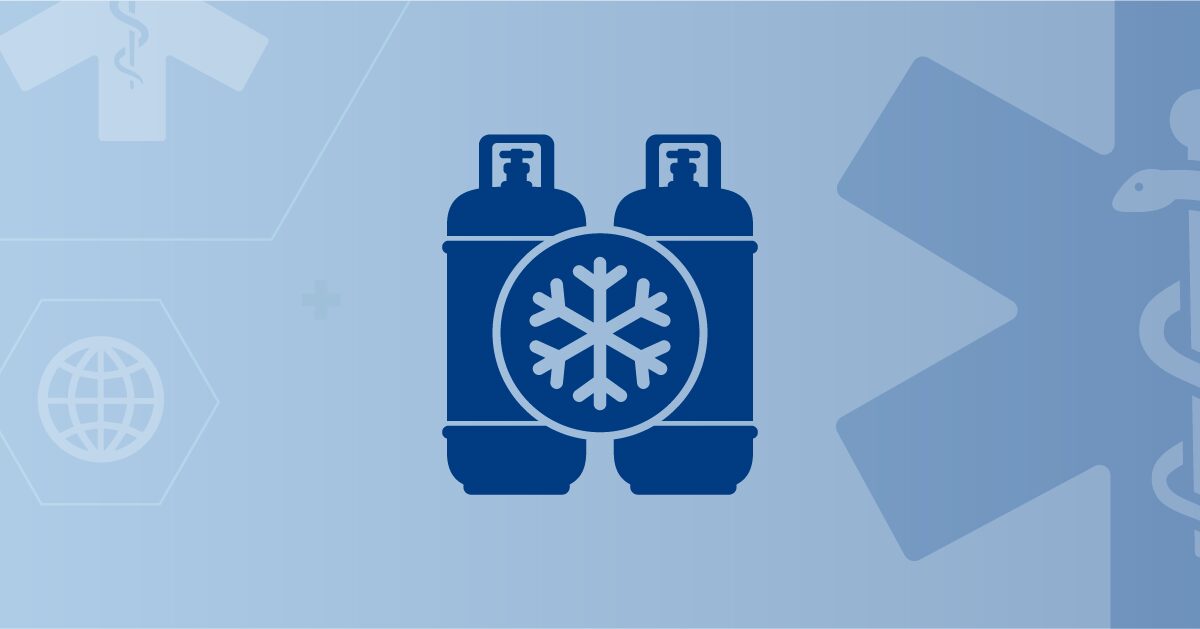Welcome back to another post in our ambulance HVAC series! This time, we’re focusing on issues with cooling and refrigerant. We’ll take a look at several possible causes and their solutions.
If you’re having other problems, try taking a look at Ambulance HVAC Troubleshooting: Common Issues with Simple Fixes, or head on over to our blog to take a look at the other parts of our HVAC series.
If airflow and compressor operations are normal, but cooling is still not sufficient…
Consider the following potential causes below. Investigate the following four areas and make adjustments as necessary.
- Insufficient Refrigerant: You should be able to identify this issue by noting similar temperatures between the low-pressure side and the high-pressure side. If so, please begin by searching for leaks using a leak detector, and then repair any leaks as needed. Once this is done, charge the refrigerant back to the correct level.
- Excessive Refrigerant: Check the gauge to ensure that refrigerant levels are not too high. If they are, use your refrigerant recovery equipment to retrieve any excess refrigerant, and then charge to the correct refrigerant level.
- Bad Water Valve: Check to see if the temperature in the heater hose from the water valve to the main unit stays consistent under-hood temperatures when the air conditioning is turned on. If the temperature is abnormal, check the power of the actuator and the actuator motion to ensure that both are operating normally. Adjust these settings if necessary. If the problem does not resolve as you adjust these settings, you will need to replace the valve.
- Water Valve Cable: Make sure that the water valve is completely shut and inspect the cable to ensure that it is properly connected. Make adjustments as necessary to connect the cable securely.
Cooling issues caused by airflow or compressor issues can include…
- Poor Condenser Radiation/Excessive Refrigerant: If both the low-pressure side and high-pressure side have too much pressure, it may be caused by an excessive amount of refrigerant, which will make cooling less efficient. If this is happening, begin by verifying the refrigerant level to ensure that it is not too high. If the refrigerant level is normal, try cleaning the condenser, and then checking and adjusting both the fan belt and condenser fan motors as necessary.
- Air in the Cooling System (Insufficient Suction): If both the low- and high-pressure side pressures are too high, or if the low-pressure side’s piping is not cold, unwanted air may have infiltrated the cooling system. Try evacuating the system, replenishing the refrigerant, and then checking the gauge readings to confirm that the problem has resolved. If air has been in the system for too long, however, you may need to replace the liquid tank.
- Moisture Intrusion: If the low-pressure side alternates between a vacuum and normal pressure, it is likely that moisture has frozen inside of the system and clogged the valve. Normal operations should resume once the ice has melted. Replace the liquid tank, evacuate the system of any excess moisture, and then recharge the system with refrigerant.
- Refrigerant is Not Circulating: If the low-pressure side has become a vacuum and the high-pressure side reads between .49 and .59Mpa (5-6kgf/cm, 72-85 psi), or if either frost or condensation appears on both the front and rear pipe connections of the liquid tank or expansion valve, refrigerant may not be circulating correctly. This may be caused by a blockage in the air conditioning system, or by the air conditioning system being shut off by a defective valve or a malfunctioning temperature sensor. First, stop the system and check it thoroughly for signs of contamination or ice. If these are found, please evacuate the system and ensure that any contamination is removed. After that, replace the liquid tank, and then recharge the refrigerant to a normal level.
Need More Help?
Osage Ambulance has you covered! Contact us or your supply dealer for additional assistance or to secure replacement parts. We’re here to assist you with anything that you need.

